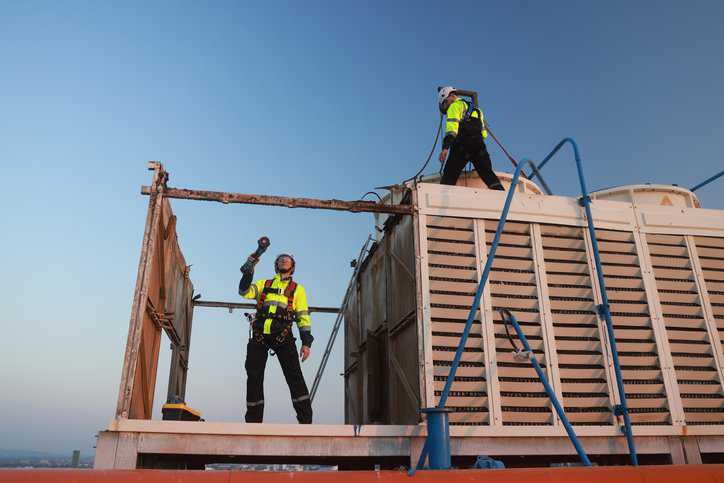Falls from heights contributed to 376 fatalities in 2023 alone, constituting 29% of all construction fatalities. For over a decade now, fall protection is consistently cited as OSHA’s number one violation, and unfortunately ineffective edge guarding plays into this number significantly. ANSI/ASSP A10.18:2023— Safety Requirements For Temporary Roof And Floor Holes, Wall Openings, Stairways, And Other Unprotected Edges In Construction And Demolition Operations prescribes rules and safety requirements from hazards arising out of unprotected sides and edges during construction and demolition activities.
Unprotected Sides and Edges
A fall hazard at the perimeter of a walking or working surface creates a “side or edge;” a fall hazard through a walking/working surface creates a “hole.” ANSI/ASSP A10.18:2023 specifies that an unprotected edge in construction is “the side or edge of a floor, platform, roof, ramp, runway, or other walking/working surface (except at a point of access or exterior trench) where no guardrail system exists.”
Often leading to a significant drop, these edges (also known as leading edges) can be a grave fall hazard. Since leading edges can change location when additional sections are placed, formed, or constructed, protective equipment must be able to accommodate these changes. ANSI/ASSP A10.18:2023 details the requirements for the installation of protective systems for edges and holes—including appropriate fall protection measures like personal fall arrest or fall restraint systems.
What Is ANSI/ASSP A10.18?
ANSI/ASSP A10.18:2023 establishes safety requirements to protect employees and invitees from falls through temporary roof and floor holes, wall openings, stairways, inactive leading edges, and other unprotected edges. This American National Standard requires the guarding of unprotected roof and floor holes, wall openings, and other unprotected sides or edges or the use of safety nets or personal fall arrest and/or fall restraint systems when guardrail systems are not in place. The purpose of ANSI/ASSP A10.18:2023 is to provide guidance for protecting workers from falls.
This standard applies only to instances when the leading-edge work is inactive and not currently under construction; consequently, is considered an unprotected side and edge.
Guardrail Systems
The objective of guardrail systems is to provide protection at holes, openings, unprotected sides and edges, and inactive leading edges of elevated working surfaces. Specifically, ANSI/ASSP A10.18:2023 details that guardrail systems should be constructed of materials such as wire rope, pipe, wood, metal, or plastic. Additionally, guardrail systems should be erected to protect people from falling through or into wall openings where the exterior bottom edge of a wall opening is 6 feet (182.9cm) or more above lower levels, and the interior bottom edge of the wall opening is less than 39 inches (99.1cm) above a walking/working surface. In short, when guardrail systems are installed, the walking surface within the guarded area should be secure, safe, and structurally sound to prevent workers from falling to a lower level.
ANSI/ASSP A10.18:2023— Safety Requirements For Temporary Roof And Floor Holes, Wall Openings, Stairways, And Other Unprotected Edges In Construction And Demolition Operations is available on the ANSI Webstore and in the following Standards Package: ANSI/ASSP. A10 Construction Package.
